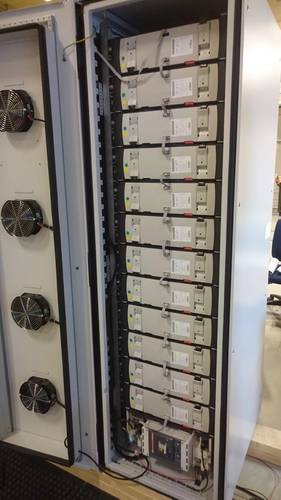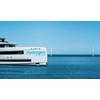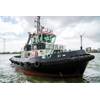Saft will supply two specialized Seanergy marine lithium-ion (Li-ion) battery systems to Rolls-Royce Marine for integration in the hybrid propulsion systems for the polar research vessel RRS Sir David Attenborough. The new vessel, one of the most advanced ever, is being commissioned by the U.K.’s Natural Environment Research Council (NERC) for operation by the British Antarctic Survey.
The contract follows an earlier Rolls-Royce Marine contract for a hybrid multi-application vessel for Kystverket, the Norwegian Coastal Administration.
Helge Gjerde, Rolls-Royce, President – Offshore & Merchant Solutions, said, “Our brief is to ensure that the RRS Sir David Attenborough is the very best equipped ship of its type. There can be no compromise on any aspect of the vessel’s systems. That’s why we have selected Saft Li-ion battery technology as its proven safety, performance and reliability is the perfect complement to our hybrid propulsion systems.”
“This marine contract strengthens Saft’s relationship with Rolls-Royce,” said Annie Sennet, Saft Executive VP. “It shows how our advanced battery systems can help ship owners and operators to meet stringent energy efficiency targets.”
Rolls-Royce Marine has designed and will equip the RRS Sir David Attenborough. It is being built at the Cammell Laird site in Birkenhead. When the 128-meter-long ship enters service in 2019 it will carry out oceanographic and other scientific work in the Antarctic and the Arctic, as well as transporting supplies to Antarctic research stations.
The Rolls-Royce diesel electric propulsion system will be powered by the new Bergen B33:45 engines that will operate in combination with two Saft Li-ion batteries. Fully integrated into the vessel’s control and automation system; the batteries provide a combined 1450 kWh capacity with a maximum voltage of 1011 V. They will help deliver the peak power required by the vessel, such as when operating in a dynamic positioning mode; and have been sized to enable the vessel to be self-sufficient in fuel during voyages of up to 19,000 nautical miles. The Li-ion batteries will also help to push the vessel through ice up to one meter thick, while towing equipment over the side, with extremely low underwater radiated noise, avoiding disturbing marine mammals and fish shoals or interference with survey equipment.
The Rolls-Royce Marine system will feature Saft’s patent pending Li-ion Super-Phosphate (SLFP) high power cells which have Bureau Veritas, Lloyds Register and DNV GL certification.
As a Li-ion technology, SLFP has the advantages of high efficiency, long calendar and cycling life, fast-charge capability and high power output. It is also modular, meaning that a battery system can be tailored to closely match the customer’s power and voltage requirements. Compared with other Li-ion chemistries, SLFP technology is particularly well-suited to civil marine applications as it delivers reliable performance over a wide temperature range, has high tolerance to electrical and mechanical abuse, and has a high inherent level of safety.
Saft will deliver the two battery systems to the Cammell Laird site in December 2017.
• 


















